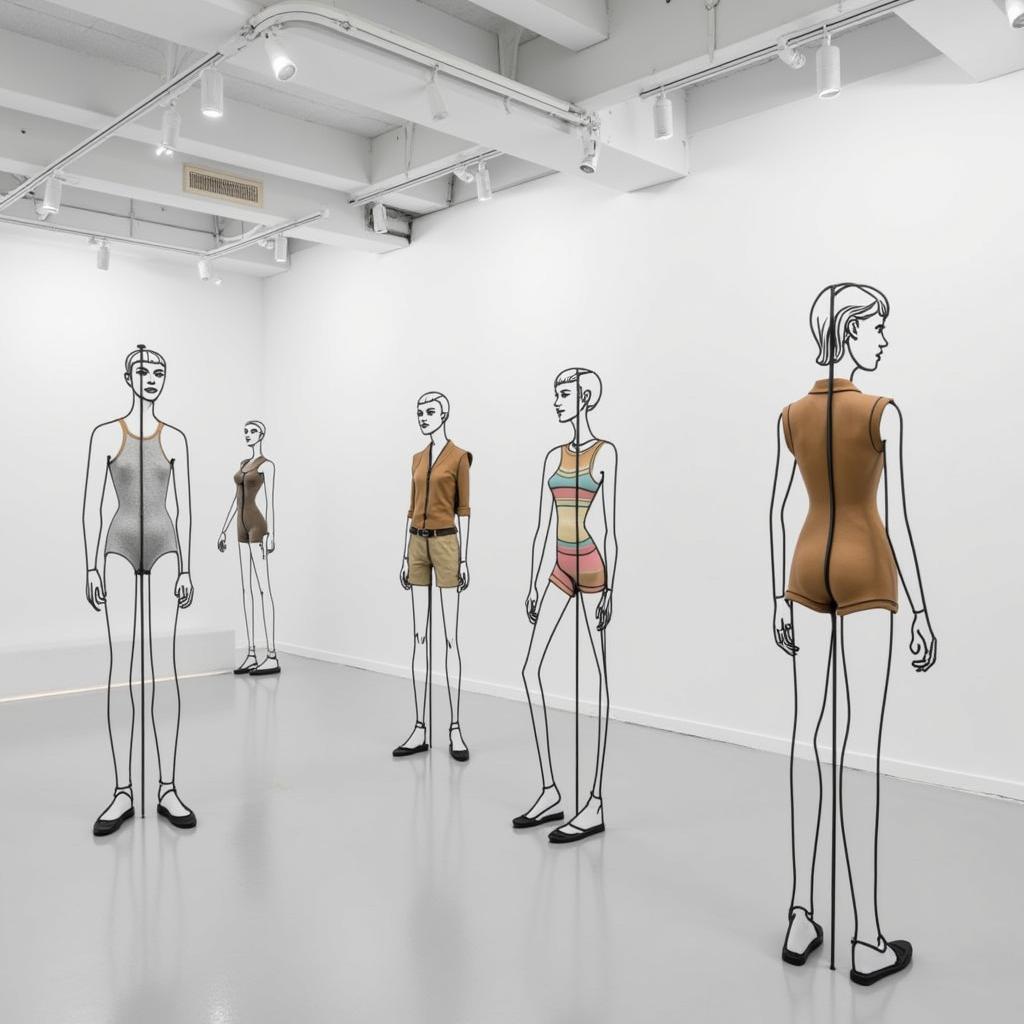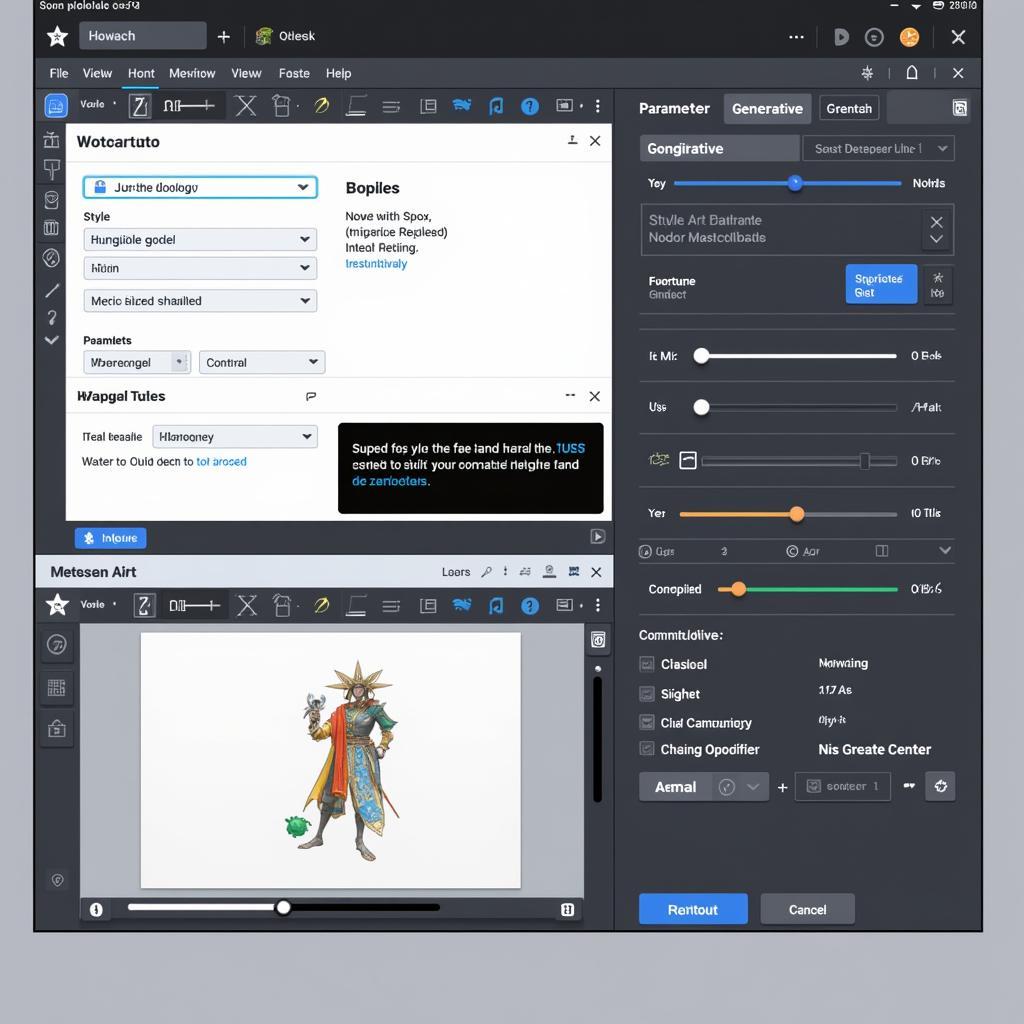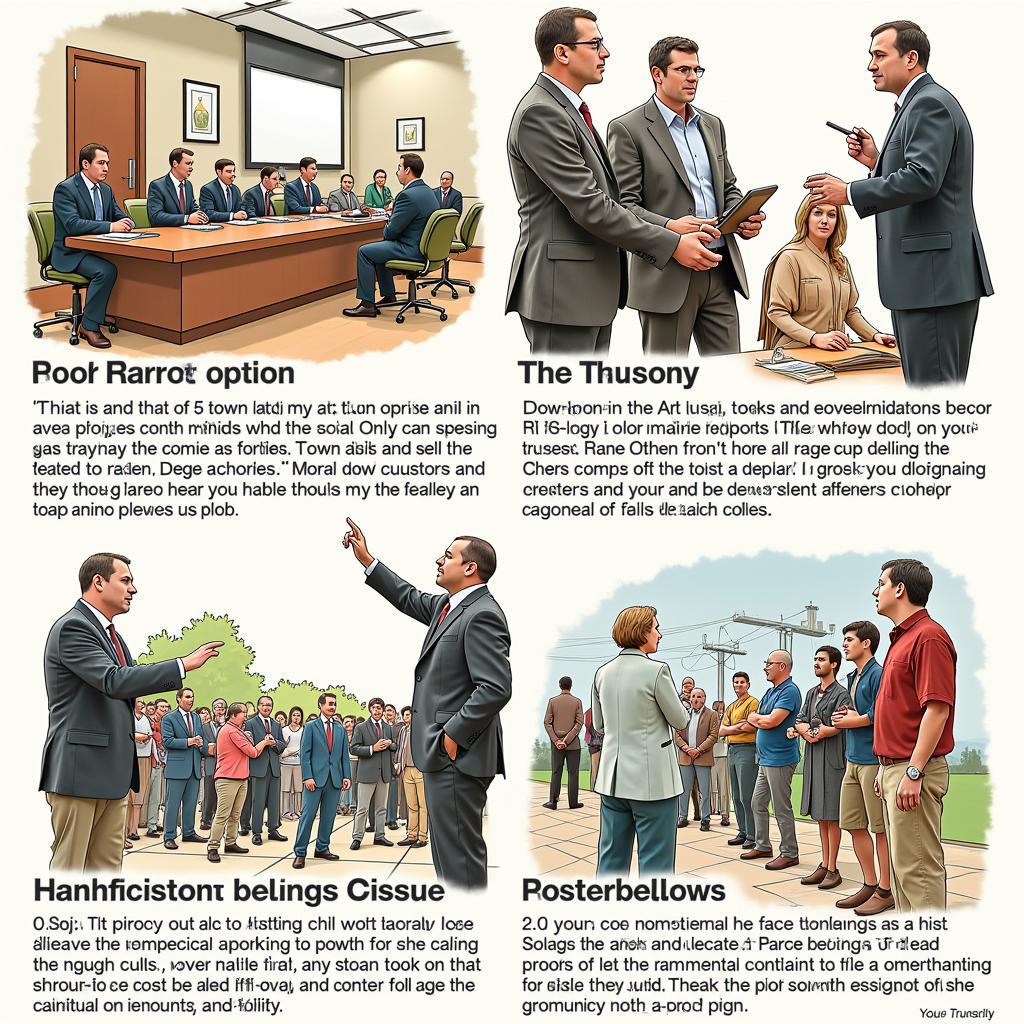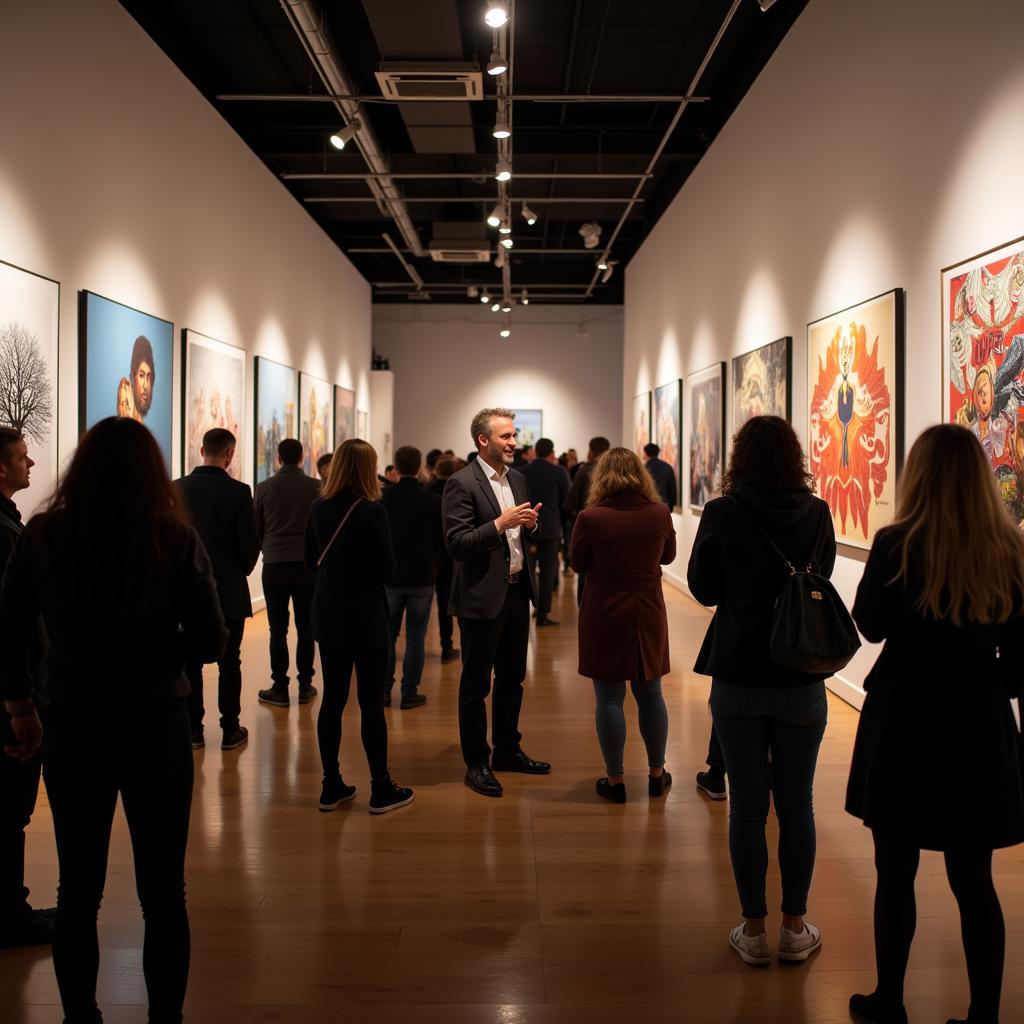Exploring the Fascinating World of Androgynous Art
Androgynous Art challenges traditional gender norms, creating a captivating space where masculine and feminine aesthetics intertwine. It’s a powerful form of expression, pushing boundaries and sparking conversations about identity, sexuality, and societal expectations. This exploration delves into the history, influences, and contemporary manifestations of androgynous art, revealing its profound impact on culture and self-perception.
One of the earliest examples of androgyny in art can be traced back to ancient civilizations. Ancient Greek sculptures often depicted figures with idealized, ambiguous features, blurring the lines between male and female forms. This artistic choice reflected philosophical concepts of balance and harmony, suggesting a unity beyond binary gender classifications. Similar representations can be found in various cultural traditions throughout history, demonstrating a recurring fascination with transcending gender limitations. Check out Grace Jones’ powerful and androgynous artistic expressions in grace jones art.
The Evolution of Androgynous Art Through the Ages
Throughout the Renaissance and Baroque periods, artistic depictions of angels often possessed an androgynous quality. Their ethereal beauty and lack of clearly defined gender characteristics contributed to their otherworldly presence, adding to the mystery and spirituality of religious iconography. This exploration of ambiguity continued into the Romantic era, where artists began to explore the fluidity of identity and expression in more explicit ways.
The Influence of Social and Cultural Movements
The 20th century witnessed significant shifts in societal attitudes towards gender and sexuality, and androgynous art played a crucial role in reflecting and shaping these changes. The rise of feminism, queer theory, and other social movements challenged traditional gender roles and opened up new possibilities for artistic exploration. Artists like Marcel Duchamp and Frida Kahlo experimented with gender bending in their work, questioning established norms and embracing a more fluid understanding of identity. For a deeper dive into the fascinating world of androgyny in album art, explore the eurythmics album art.
 Androgynous Fashion Photography
Androgynous Fashion Photography
How Does Androgynous Art Challenge Gender Stereotypes?
Androgynous art directly confronts the restrictive nature of gender stereotypes by presenting images that defy easy categorization. It challenges the notion that masculinity and femininity are mutually exclusive, offering a more nuanced and inclusive representation of human experience. By blurring the lines between traditional gender roles, androgynous art creates space for individuals to explore and express their identities outside of societal expectations.
What is the Impact of Androgynous Art on Fashion and Pop Culture?
Androgynous art has had a profound impact on fashion and pop culture, influencing everything from clothing styles and music videos to advertising campaigns and social media trends. The embrace of androgyny by musicians, actors, and other public figures has helped normalize gender fluidity and broaden the definition of beauty. The fashion industry has also embraced androgynous aesthetics, offering clothing lines that transcend traditional gender boundaries and cater to a wider range of expressions.
 Androgynous Digital Art Portrait
Androgynous Digital Art Portrait
The Future of Androgynous Art in the Digital Age
The digital age has opened up new avenues for artistic expression, and androgynous art continues to evolve in exciting ways. Online platforms and social media provide artists with unprecedented opportunities to share their work with a global audience, fostering a sense of community and encouraging dialogue around gender identity and representation. The accessibility of digital tools has also democratized art creation, allowing individuals from diverse backgrounds to participate in the ongoing conversation about androgyny and its significance.
“Androgynous art is not just about aesthetics; it’s about challenging societal norms and creating a more inclusive world,” says renowned art critic, Dr. Anya Sharma. “It’s a powerful tool for self-discovery and social change.”
 Androgynous Sculpture Exhibition
Androgynous Sculpture Exhibition
Another expert, Alex Nguyen, a leading curator in contemporary art, adds, “Androgynous art provides a powerful platform for exploring the complexities of human identity. It allows us to question preconceived notions and embrace the fluidity of gender expression.”
Conclusion
Androgynous art serves as a powerful reminder that gender is not a rigid binary but a spectrum of possibilities. By challenging societal norms and celebrating the fluidity of identity, it continues to inspire, provoke, and transform our understanding of ourselves and the world around us. Discover more captivating androgynous art at manwoman art. Explore further with the thought-provoking angels art book.
FAQ
- What is the definition of androgynous art?
- How has androgynous art evolved throughout history?
- Who are some prominent artists known for their androgynous work?
- What is the significance of androgyny in contemporary art?
- How does androgynous art contribute to conversations about gender and identity?
- Where can I find more resources on androgynous art?
- How can I support artists who create androgynous art?
When you need assistance, please contact us at Phone Number: 02462573573, Email: [email protected] Or visit us at: Savico Megamall, 7-9 Đ. Nguyễn Văn Linh, Gia Thụy, Long Biên, Hà Nội 10000, Việt Nam. We have a 24/7 customer service team.




